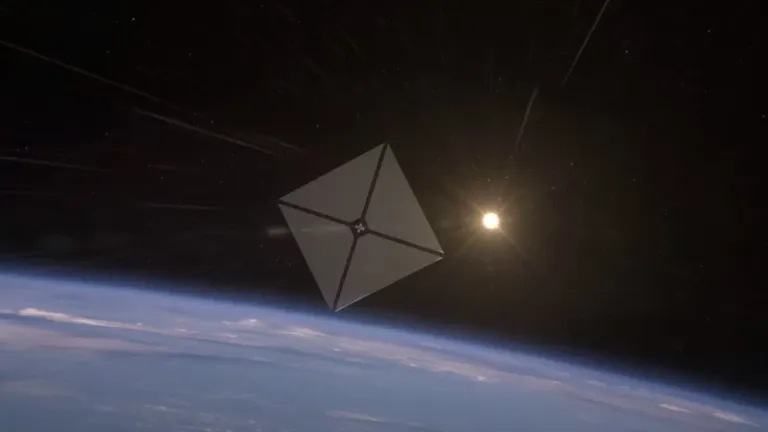Solar sail with future technology.
Solar sail with future technology.

Navegar por el espacio en un velero impulsado por la luz del sol, parece una idea secada de una novela de ciencia ficción romántica, pero en realidad sí es posible hace unos días una vela solar con tecnología de próxima generación, conocida como sistema de Vela solar compuesta avanzada de la NASA fue lanzada a bordo de un cohete electrón de la compañía Rocket lab desde el complejo de Lanzamiento 1, en Mahia, Nueva Zelanda.
This technology can advance future space travel and expand our understanding of the Sun and the entire solar system, since cheaper exploration ships can be launched as they do not need fuel to propel them and allow these ships to travel through the solar system. for many more years and this is the key to the issue, solar sails do not use fuel, they use the pressure of sunlight as an impulse, leaning towards or away from the Sun so that the photons, which are the particles of light, bounce back. on the sail and push the spaceship.

Souce
But if photons do not have mass, how can they push a candle or anything else, when we go out to the window we do not notice that the sun hits us with light all over our face, well, in reality, it does, but it is an extremely small smack, you would have to be as light and as reflective as a solar sail and be in space to notice the thrust, because although light photons have no mass they do have energy and have something that in mechanics is called momentum , when colliding with an object they transfer some of that momentum to the object creating thrust.

Souce
Various nations are involved in the development of this technology. I highlight, for example, the Japanese Ikaros mission, which is currently the only flight beyond the Earth with a solar sail. It was launched on May 20, 2010, bound for the planet Venus, but The Ikaros was not 100% solar powered, it was more of a combination, since it also had an ion engine, the problem is that there is always some problem, of course what adventure does not have problems and difficulties and the adventure of research well, also has.
Thank you for visiting my blog. If you like posts about #science, #planet, #politics, #rights #crypto, #traveling and discovering secrets and beauties of the #universe, feel free to Follow me as these are the topics I write about the most. Have a wonderful day and stay on this great platform :) :)
0
0
0.000
Thanks for your contribution to the STEMsocial community. Feel free to join us on discord to get to know the rest of us!
Please consider delegating to the @stemsocial account (85% of the curation rewards are returned).
You may also include @stemsocial as a beneficiary of the rewards of this post to get a stronger support.